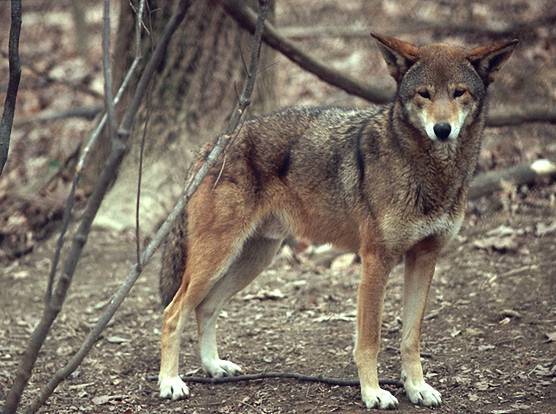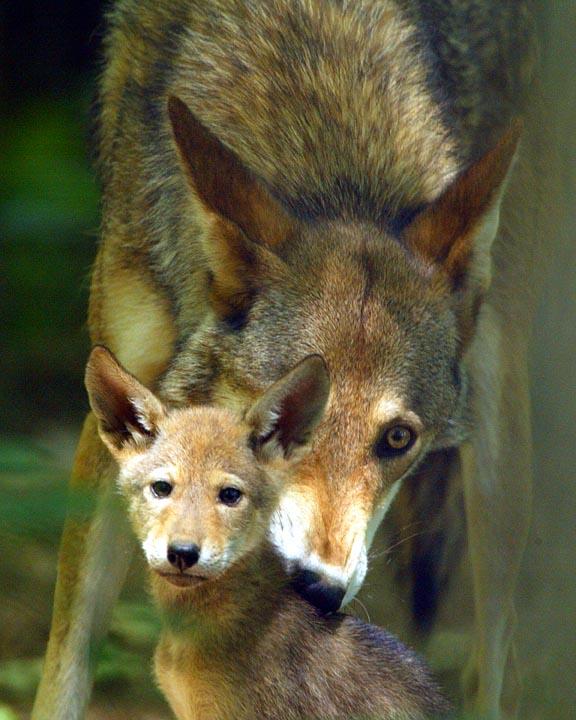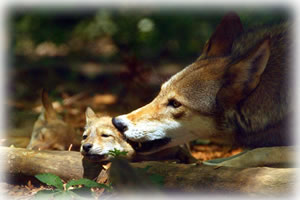|

Although it has been suggested that the red wolf (Canis rufus) originated as a fertile
cross between gray wolves and coyotes, the red wolf may have existed in North America before both the gray wolf and the coyote.
Fossils up to 750,000 years old indicate that the red wolf may be a close relative to a primitive ancestor of the North American
canids. The red wolf is similar to but smaller than the gray wolf and is intermediate in many characteristics between gray
wolves and coyotes.

It often interbreeds with the coyote, and because of this, it is believed that the
red wolf may eventually become exstinct by hybridization, rather than by man. It ranges in size from 15" to 16" shoulder height,
55-65" in length, and can weigh anywhere from 40 to 90 pounds. Its colors range from cinnamon red to almost black, with tan
markings above the eyes. It feeds mainly on birds, rabbits, and other small rodents, but will also hunt deer and other large
prey if available. The red wolf's historic range covered the southeastern portion of the United States, reaching as far west
as Texas and north to Illinois. They enjoy their habitats to be warm and moist, although they were also present in pine forests,
bottom land hardwood forests, coastal prairies, and marshes. Destruction of forests and coastal marsh habitat, as well as
widespread persecution and predator control activities, brought them close to extinction. All of this in addition to hybridization.
In 1980, they were declared biologically extinct in the wild. In the wild, red wolves normally establish life-long

mates, and their packs usually consist of an adult pair and the young. They reach
breeding maturity in their second or third year. Breeding seasons can vary from March to May. Den sites include stream banks,
enlarged burrows of other animals, hollow trees, and sandy knolls in coastal areas.
In my opinion, these wolves
are definatly along the line of extinction, however they are an interesting species. Their long ears and skinny body do give
them look of coyote, even a fox, but they are still classified under the wolf family. I hope these guys make a recovery just
like the gray wolves are trying to now.
|

